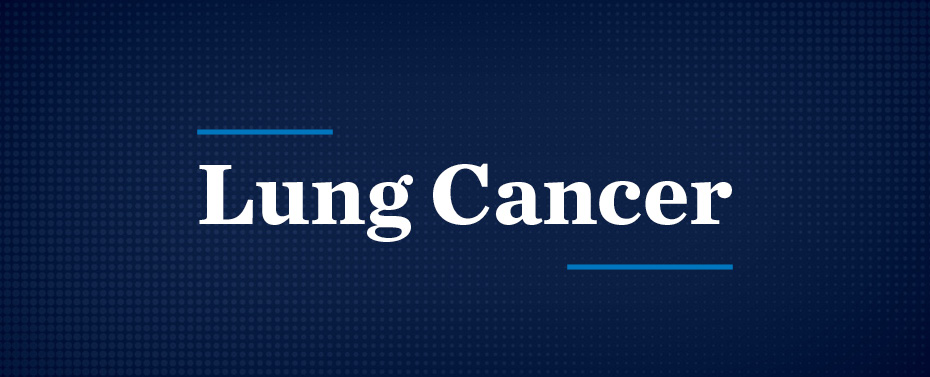Lung Cancer Screening and Diagnosis

Screening for Lung Cancer
Detecting lung cancer early significantly improves the likelihood of treatment success. If you’re at high risk for developing lung cancer, a lung cancer screening test may help detect problems much earlier compared to other examinations.
Englewood Health uses low-dose computerized tomography (CT) scans to quickly and accurately identify suspicious masses. Compared to standard examinations, like standard chest X-rays, low-dose CT scans help doctors more precisely identify lung tumors.
Low-dose CT uses a sophisticated machine to take multiple X-ray images of your chest and lungs using small amounts of radiation. This procedure takes just a few minutes and causes no pain or discomfort.
Since 2014, Englewood Health has screened more than 1,600 high-risk smokers and former smokers. We’re recognized by the Lung Cancer Alliance as a Screening Center of Excellence. Your doctor can help you determine if a lung cancer screening test is right for you.
Eligibility and Appointments
You may be eligible for a low-dose CT scan for lung cancer screening if you:
- Are 55 – 84 years old
- Have no signs or symptoms of lung cancer and no diagnosis of cancer within the past five years
- Are either a current smoker or have quit within the last 15 years
- Have at least a 20 “pack-year history” of smoking. To calculate your history, take the number of packs you smoke(d) per day and multiply it by the number of years you have smoked
You must have a doctor’s prescription. To make an appointment, call 201-894-3640.
Lung Cancer Diagnosis
Your doctor may recommend several lung cancer tests to accurately diagnose lung cancer. Initially, these tests may include:
- Chest X-ray: Standard chest X-rays may provide the first clues about abnormal growths or lesions in the lungs.
- Computerized tomography (CT): CT scans combine a series of high-resolution images to form precise images of soft tissues and internal organs.
- Magnetic resonance imaging (MRI): Using strong magnetic fields and radio waves, MRIs produce detailed three-dimensional (3D) pictures of your lungs.
- Positron emission tomography (PET): Before this procedure, doctors inject a small amount of radioactive sugar into your bloodstream. This tagged sugar collects in lung tumors, or other incidental cancers, highlighting them on images.
If your doctor suspects lung cancer, you’ll likely need further testing to confirm the diagnosis. Other lung cancer tests you may undergo include:
- Blood samples: We take blood to detect tumor markers or tumor DNA that may be released from the tumor into the bloodstream.
- Bronchoscopy: Using a thin, flexible tube called a bronchoscope, your doctor views the interior of your lungs. Your doctor may collect and remove tissues for further testing during this procedure.
- EBUS: Using this technology, we sample lymph nodes around the lung. This allows us to determine the exact stage of the tumor, and thereby determine the best treatment plan. If there are lymph nodes involved, then multimodality therapy will be recommended.
- Molecular Testing: We use this test to examine tumors for genetic changes. This type of testing is recommended mostly in the setting of advanced disease or following surgery when additional therapy is advised. Identifying the unique genetic properties of each tumor helps your care team make personalized treatment recommendations that are most likely to succeed.
- Navigational Bronchoscopy: This is an exciting new technology that uses GPS technology to direct a video-bronchoscope to a small tumor in the periphery of the lung. Englewood Health was one of the first hospitals in the region to obtain this technology. We use it routinely to biopsy small lung tumors. This technology is evolving. Soon it will enable us to both diagnose and treat small tumors with microwave or RFA — possibly avoiding the need for surgery. Robotic bronchoscopy is an even more specific version of this technology that is forthcoming.
- Sputum cytology: We collect several samples of mucus coughed up from your lungs, called sputum. Our in-house pathologists then analyze the sputum for signs of cancer.
- Thoracentesis: Doctors insert a long, thin needle between your ribs to collect fluid from around your lungs. This test helps determine whether cancer has spread outside lung tissue.
- Tissue biopsy: This is often performed via image-guided techniques or with the bronchoscope. We collect a tissue sample and examine it to determine if it is cancerous.
